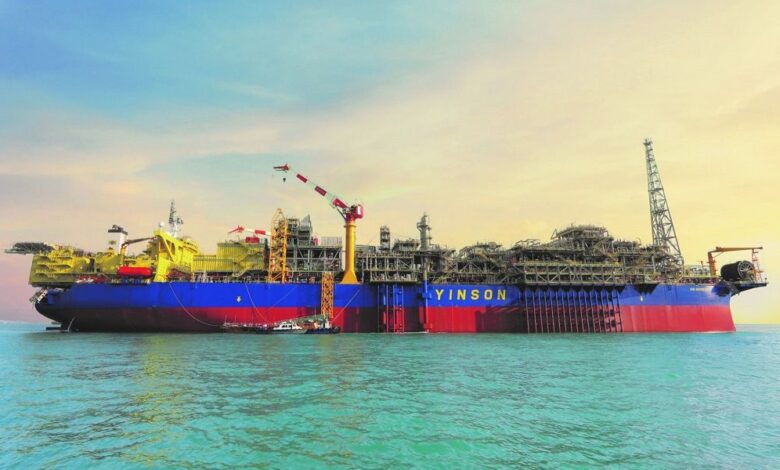Reducing CO2 emissions from floating production units

Marie-Francoise Renard, offshore sales and marketing director of Bureau Veritas writes for Splash today.
As oil and gas companies seek to improve the carbon efficiency of their operations, one area of focus is investing in low-carbon initiatives to reduce the carbon footprint of their offshore activities. This includes the emissions from FPUs (floating production units), including floating production storage and offloading units (FPSOs), and floating liquefied natural gas units (FLNGs), where a number of initiatives are being developed to lower their carbon impact.
Solutions
Using electricity from renewable sources is one key avenue to reducing CO2 emissions from offshore platforms such as FPUs. These installations require energy to power equipment such as compressors or other rotating machinery. Currently, most of this energy is generated from fossil fuels, including turbines using natural gas from the reservoirs. These gas turbines represent approximately 80% of CO2 emissions from offshore activities.
Using shore power or energy from offshore wind farms instead can significantly reduce these emissions. This solution (power from shore) is particularly viable for facilities located near shore where access to the main grid is possible. For remote facilities, the utilisation of offshore wind farms located in proximity to the platform is an alternative, but this relies on weather and electricity storage solutions.
When obtaining power from the main grid or from wind farms is not feasible, carbon capture, utilisation, and storage (CCUS) offers another solution. Carbon capture installations already exist on land, notably in gas power plants. Although CCUS has not yet been widely adopted in offshore facilities due to complexity, weight, and space requirements, some compact solutions are being developed, making the option more promising for the offshore sector.
Closed Flare technology has also been developed to avoid the flaring of gas at offshore facilities. Some companies are also pursuing ‘Low Carbon Process Topsides’ to improve the energy efficiency of topside processing equipment using renewable energy sources and exploring alternative fuels. Implementing Low Carbon Process Topsides can require modifications to the existing infrastructure or the installation of new equipment, sometimes requiring increased Topsides capacity. Zero leak valve management equipment is also being developed with more stringent requirements for low fugitive emissions.
Industry drivers
There are a number of key drivers behind the push for the reduction of CO2 emissions from FPUs. One of these drivers is the emphasis on sustainability by oil & gas (O&G) companies to provide safe, sustainable, and affordable energy. They are leveraging the United Nations Sustainable Development Goals (SDGs) framework to set targets, define actions, and disclose their sustainability performance.
Many O&G companies are focusing on integrating sustainability in every step of the long lifecycle of their offshore projects, from new technological development to the recycling phase. Additionally, classification rules have evolved to support the sustainability efforts of O&G companies, such as the voluntary “SUSTAINABILITY” notation developed by Bureau Veritas specifically for FPUs.
Bureau Veritas’ SUSTAINABILITY notation recognises that the asset includes key elements of Environmental, Social and Governance policy. This notation applies to units that are designed, built, and equipped with a focus on the following sustainability aspects: prevention of sea and air pollution, protection of the marine environment, reduction of greenhouse gases emissions, preparation for unit recycling, and the enhancement of crew well-being on board.
Despite the shift towards more sustainable practices and lower and zero-carbon energy production, investment in upstream oil and natural gas will remain necessary for the next three decades. The Energy Industries Council (EIC) database of tracked projects reveals that, for 2023, the CAPEX funnel for upstream oil and gas projects is still twice that of renewables. However, there is a positive outlook for renewable investment, which is expected to exceed upstream investment by 2030, with a projected total CAPEX of $3.2trn, compared to $2.9trn for upstream O&G projects. The forecast for 2050 is that almost half of the global energy mix will be renewable. Between 2030-2050, the EIC database shows a clear trend towards renewable energy projects, with a CAPEX of $1.4 trillion, well above upstream and midstream oil and gas projects combined ($325bn).
The offshore oil and gas industry is taking steps towards a more sustainable future by investing in renewable energy, adopting carbon reduction technologies and strategies, and promoting sustainability through classification rules. The industry’s emission reduction efforts will continue to evolve as they aim to achieve their sustainability targets and support the global transition to a low-carbon economy.
